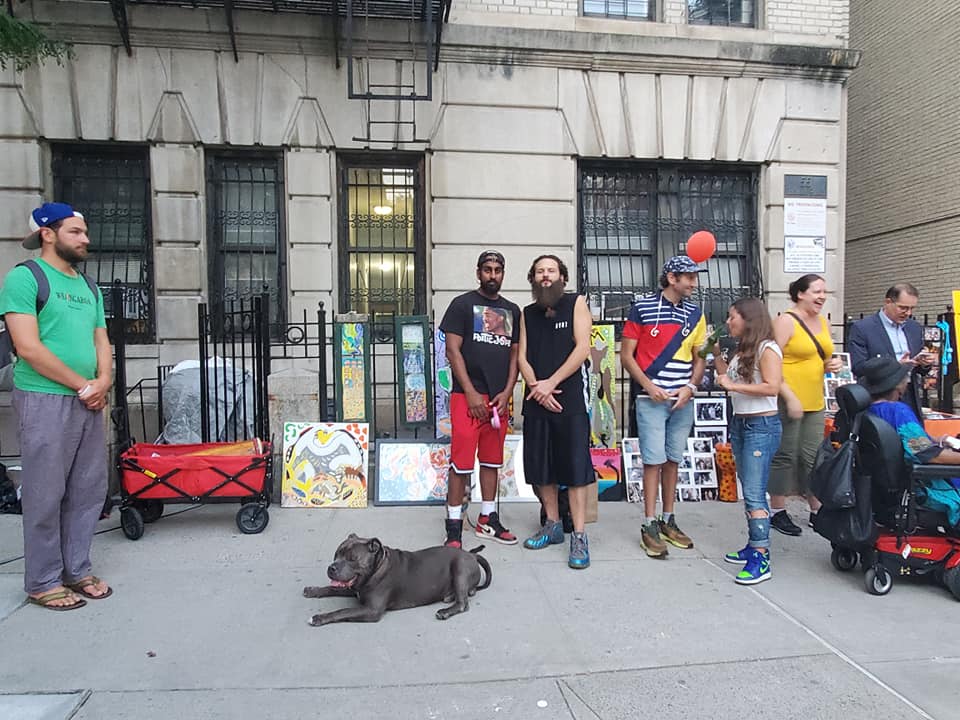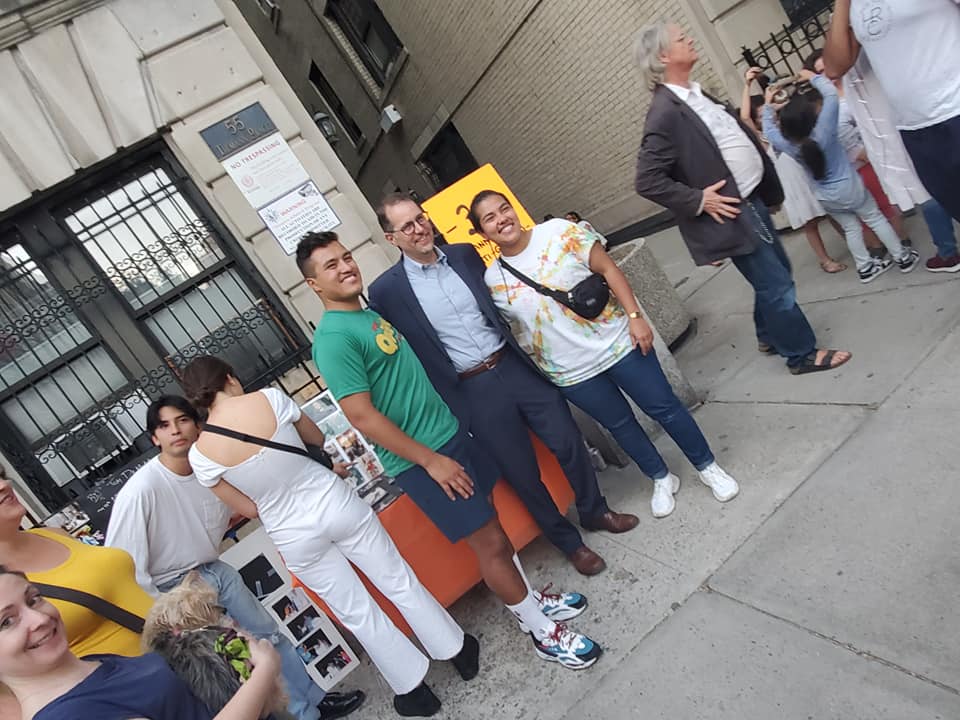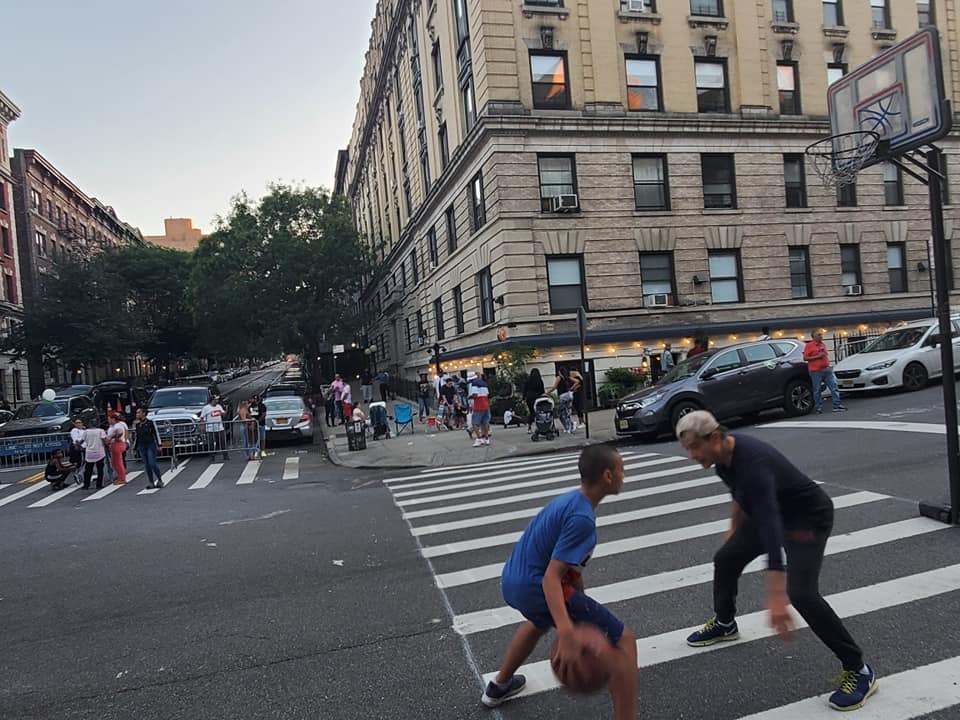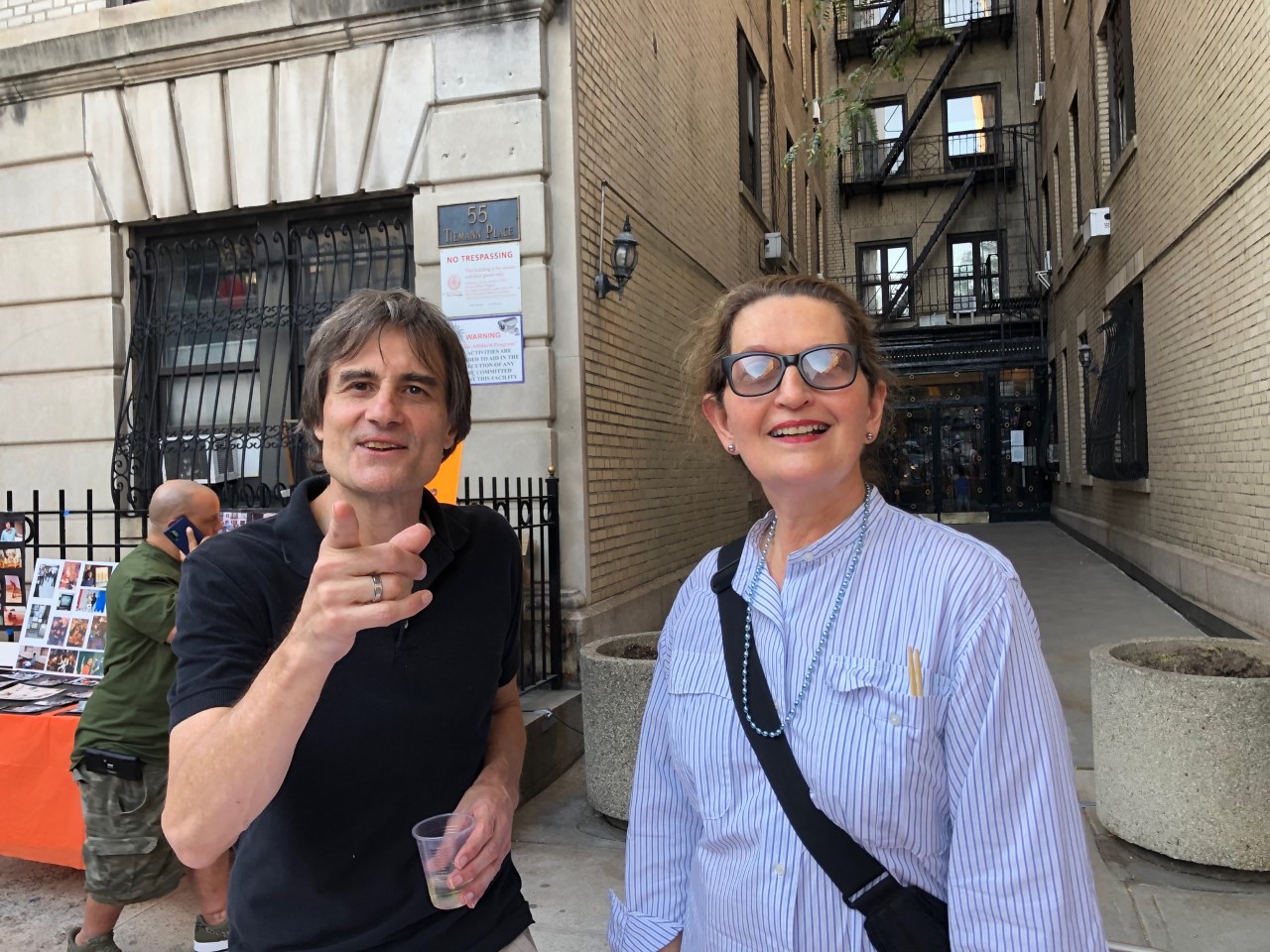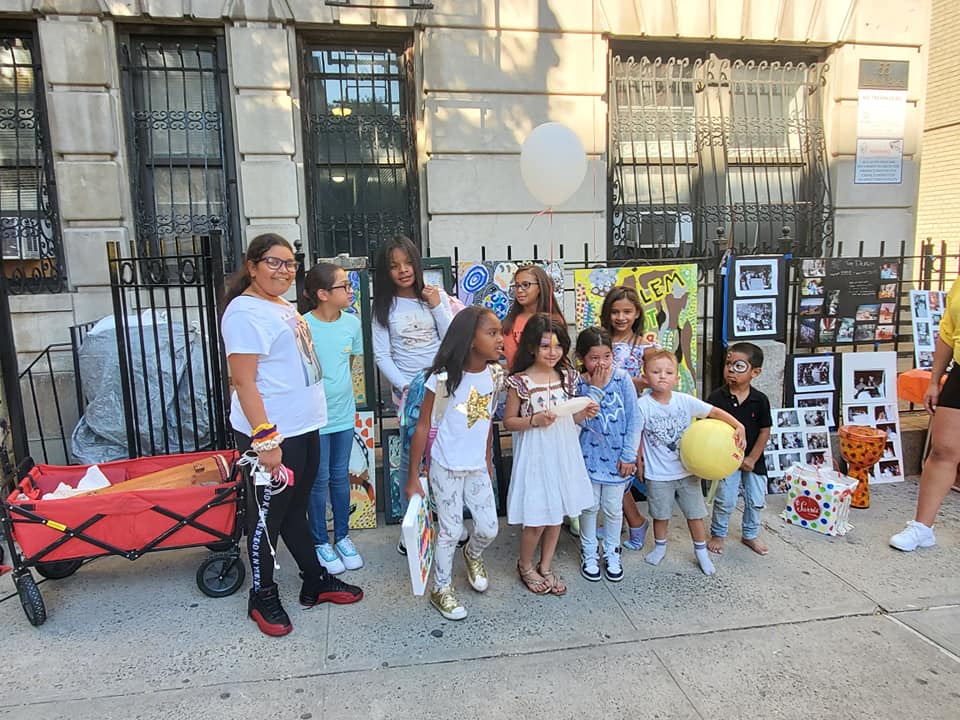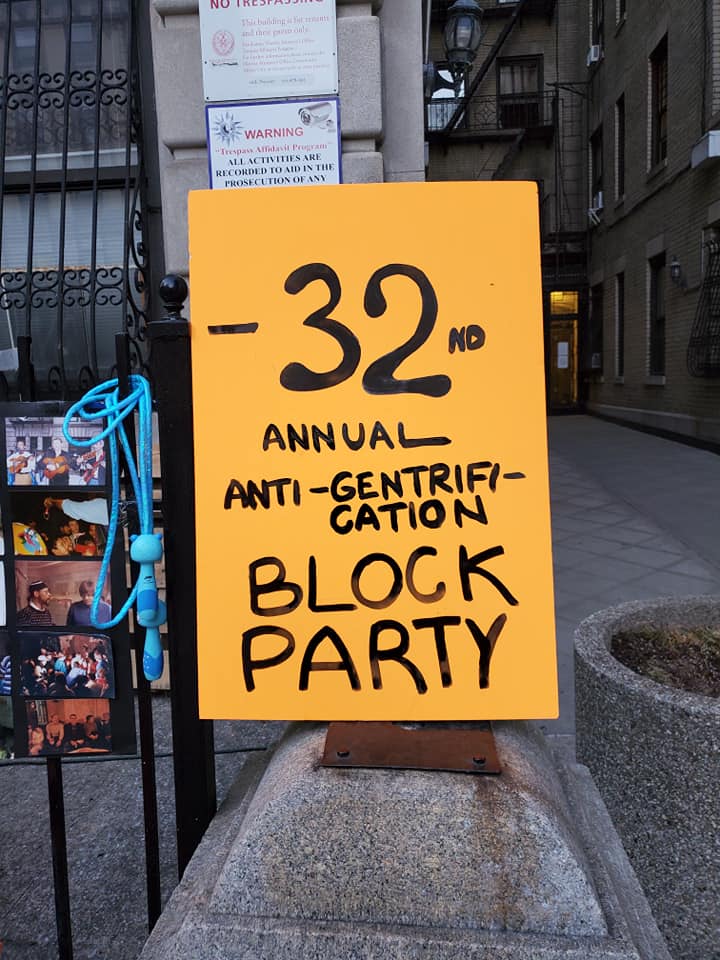
The Harlem end of Claremont Ave. was alive last Saturday. The next gen (with a little help from elders) organized the 32nd annual Anti-Gentrification block party, turning it into a tribute to the late Tom DeMott and other lost vets of our hood. Brother Tom got our parties started after the Tiemann Place Tenants Alliance won early battles that enabled renters without big bank to stay in struggle against landlords (and co-op-ers). Over the decades, thanks to Tom’s prompts, the block party became a funky prophylactic against root shock—a time/place where an urban village under stress renewed itself. After Tom died last fall, though, nobody knew for sure if his people would get it together again…
Seems like we should’ve trusted ourselves more. One thing’s certain: city kids will always know how to make use of a gentle slope where no cars go.
Once the barriers were up keeping traffic out for the day, those kids let loose, racing up and down the block when they weren’t sliding down the bouncy castle’s slide or chalking the pavement or taking shots at the hoop in the middle of the street. Though that court tended to get ruled by adults. One Russian cat, whose game had a Sarunas Marciulionis aspect, dominated a 4 on 4 run that took hold late in the afternoon. I was tempted to step on the court, but kept to the curb, content to hear Celia Cruz, sip Sancerre and take one nip of harder stuff. Courtesy of a young Iranian guy. (Maybe his hooch was halal!) He told stories about how his family snuck into exile in New York during the Iran-Iraq War and we rapped about Kurdish women who took down ISIS before I went back to talking art-life with Paul, my Canadian painter friend.
I was on my own, though, when the violet hour came in, which got me musing on how I learned from another exile in America to look up…
I’m thinking of the lights of American cities at dusk. Paris has its blue hour, l’heure bleue, when the sky (on some days) becomes a dark blue of rare intensity, a color of love and desperation. A perfume used it in an ad in which you saw a woman in her room, embracing a soldier in the 1914-1918 uniform, about to go back to the trenches and his death. For once the adman got it just right. Love and despair. When I look at the lights of New York, from a distance, from across the Hudson, they seem to send that same inexplicable signal of happiness and pain.[1]
I’m glad it was darker than dusk when I ran into Tommy’s Maria at the bottom of the block. She’d been trailing their grandchildren, but, by herself, she seemed unharried. We took it light, talking Tom for a New York minute but not getting too deep in the shadows—what else could we do? Still, I dared hope my sister-in-love had found some comfort in the idea her late husband’s other soul mates had honored him by keeping the party going up the hill.
Tom’s son Jamie had spoken to that, taking the DJ’s mic to show love for his gone dad. Yet this apple never falls too far from the tree. Jamie’s instinct is always to make any memorial to Tom inclusive, invoking comrades who looked out for his father. He handed off the mic to the son of Hamidulla Al-Amin (who died young from cancer in 2016). Al-Amin was a for real for real original. A Dominican who changed his name (like Muhammad Ali or El-Hajj Malik El-Shabazz) from Radamez in the 60s. Al-Amin was a messenger from the don’t-fuck-with-us grassroots. When Tom received credible death threats conveyed by the lawyer of an enraged landlord, Al-Amin had his back for two years, accompanying him to and from work and countless public meetings. This stalwart brother-man wasn’t just harder than the rest. He was more graceful too. Especially when he danced Latin or reggae which he did with equal flair, making him a rare mutt in a pre-reggaeton era.
Reggaeton’s time will never come for one married couple in our hood. While his wife—another Maria—was ready to dance on Saturday, husband Norman held back. He resists reggaeton. As he waited on the right groove to make his roots move, I made my own, asking him about his background which I was hazy about, though I’d known him forever. Turns out Norman’s parents were Bengali and African American. His wife had her own Latin thing. It’s in the clave of her name—Maria Ricardo Ben-Ali. That sort of all-world meld has become more common in the new class-bound multi-culture. But back before high globalization, Maria’s (and Norman’s) difference was… different. It denoted real worldliness, creative marginality and a natural-born aversion to bowing and scraping. I’m reminded just now of how happy Tom was when Norman and Maria came by last year’s block party. They’d moved back to the neighborhood after years in New Jersey. I know my brother was thinking they’d help keep our community truly urbane.
Before the street fair ended City Council member, Mark Levine, stopped by. Levine is the official in charge of overseeing the co-naming of our block, which will be known some one of these days as “Tom DeMott Way.” The Council member seemed to get a boost from seeing Tom’s legacy in the streets. He assured his constituents he’d give the co-naming process a push. No one has any illusions a sign will take the blues out of the blue hour on Tom DeMott Way, but it should offer a modest but meaningful balm.
Sept 25, 2019
Note
1 Hans Koning’s Little Book of Comforts and Gripes
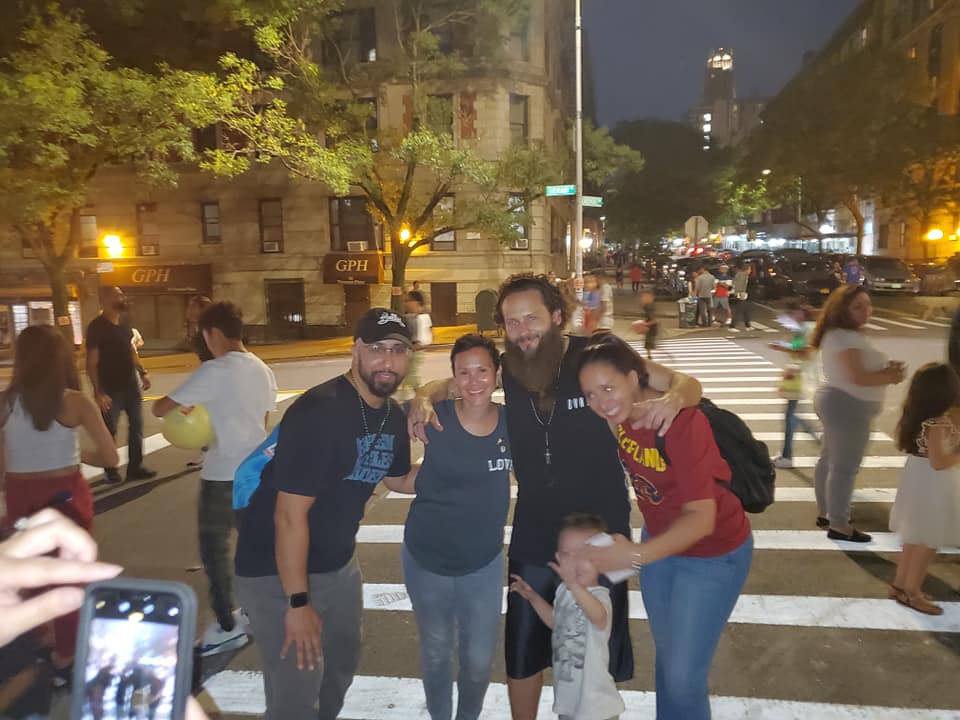
xxx
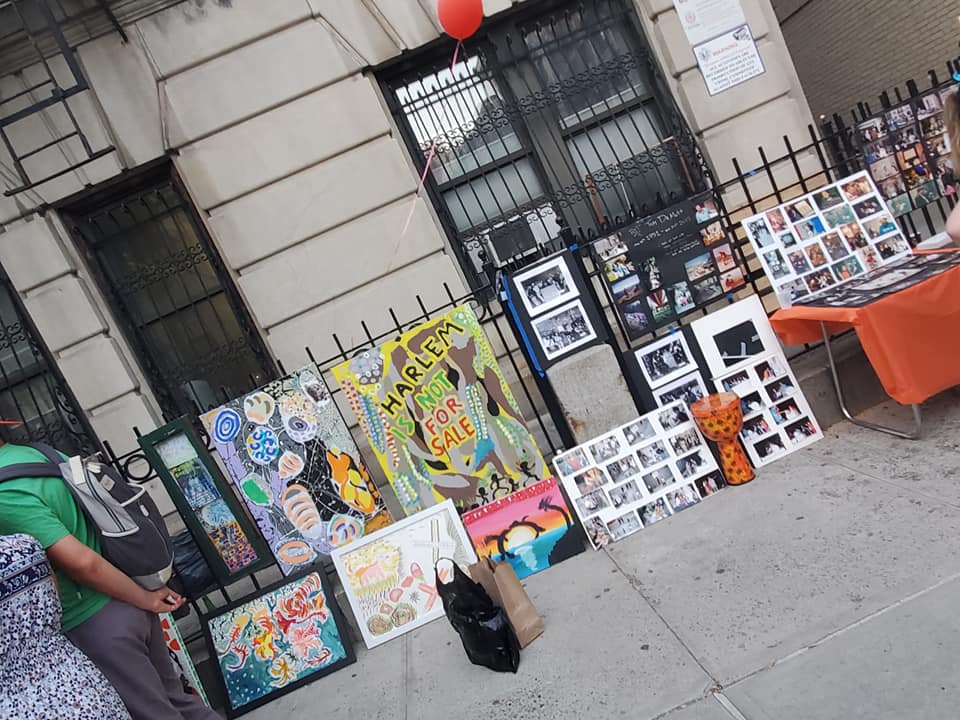
xxx
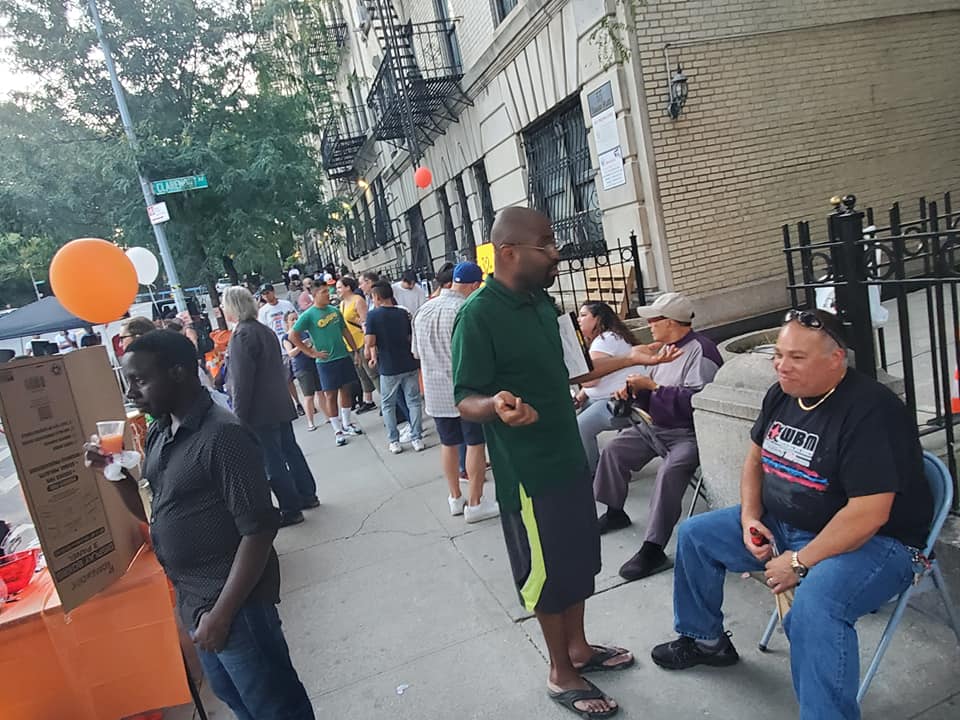
xxx
